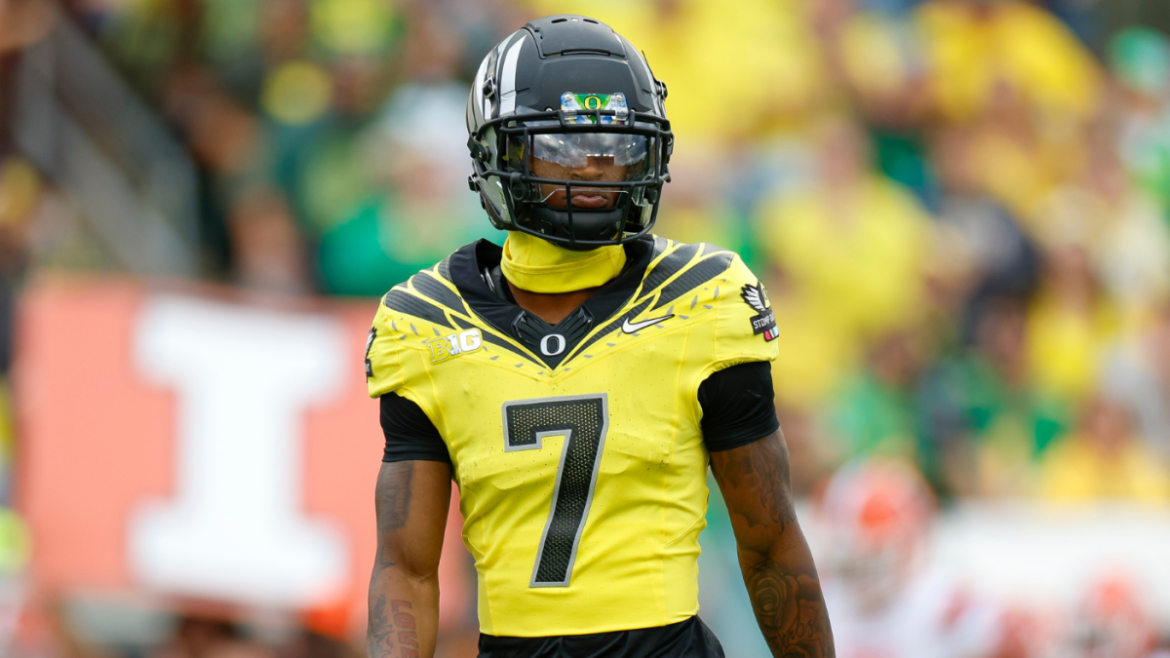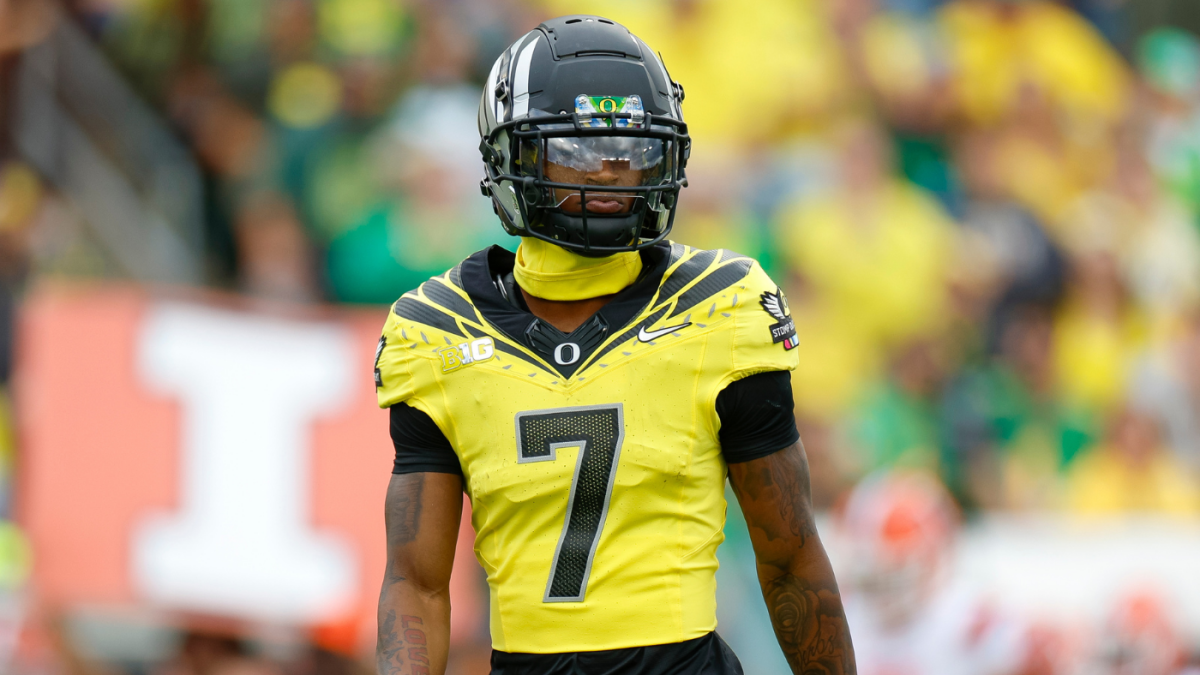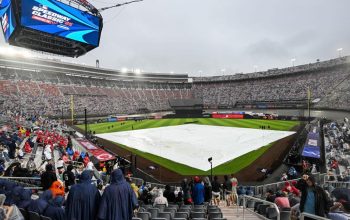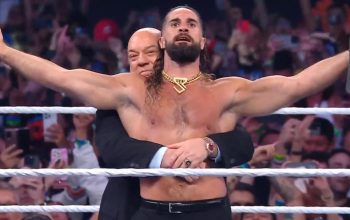Oregon Ducks’ Wide Receiver Evan Stewart: A Season in Jeopardy and What It Means for 2025
Evan Stewart, the star senior wide receiver for the Oregon Ducks, was poised to be a cornerstone of their 2025 college football season. Fresh off an impressive junior campaign marked by clutch performances in big games, Stewart’s decision to forego the 2025 NFL Draft and return to Oregon signaled both his commitment and potential breakout as an elite collegiate receiver. However, recent developments dramatically alter the trajectory of both his career and the Ducks’ offensive outlook. A devastating knee injury — specifically a torn patellar tendon — sustained recently threatens to sideline Stewart for most, if not the entirety, of the 2025-2026 season.
The Nature and Impact of Stewart’s Injury
Torn patellar tendon injuries are known to be severe, often requiring surgery followed by a lengthy rehabilitation period. For a receiver like Stewart, whose game relies on speed, agility, and sharp route-running, such an injury compromises foundational physical attributes. Reports indicate that Stewart’s injury occurred prior to the 2025 season, with the exact timing placing it just after spring practices or during early team activities. This timing is particularly damaging as it robs him of critical preparation and conditioning time.
Although the Oregon athletic department has yet to officially release an in-depth medical statement, multiple credible sources—including CBS Sports and On3—have confirmed the injury’s seriousness and the likelihood that Stewart will miss a significant portion, if not the entire college football season. The absence of Stewart removes an integral offensive weapon, one who led the Ducks in receiving yardage after the departure of other key wideouts to the NFL, such as Tez Johnson and Traeshon Holden.
Evan Stewart’s Value to Oregon’s Offense
Stewart was widely regarded as Oregon’s top returning receiver for the 2025 season. His athleticism, hands, and ability to perform under pressure had positioned him as a team leader and go-to target. His versatility enabled him not only to boost the Ducks’ passing attack but also to create space for complementary receivers and running backs. This multidimensional contribution is difficult to replicate easily, given the depth and experience required at the collegiate level.
Moreover, Stewart’s presence extended beyond tangible statistics. His leadership and experience in critical games contributed to Oregon’s strong 2024 performance (13-1 record). As a receiver who thrived in high-pressure situations, his absence raises concerns about the Ducks’ ability to maintain offensive consistency, especially against top-tier defensive units.
The Broader Ramifications for Oregon Ducks Football
Losing a player of Stewart’s caliber just before the season is not merely a football setback; it triggers a chain reaction across roster planning and game strategy. With a major void at the top receiving position, Oregon’s coaching staff must expedite the development of less experienced receivers, such as Dakorien Moore and Justius Lowe, to fill the gap. These players have shown promise but lack Stewart’s proven track record and reliability.
Additionally, the injury puts pressure on Oregon’s quarterback situation to adapt. Without a dependable primary target, the Ducks’ passing game risks becoming less dynamic, which could lead to a more one-dimensional offense or force quicker throws to less mature receivers. This could ultimately affect the overall efficiency of the offense and the team’s competitive edge in the Pac-12 and national rankings.
Oregon’s recruiting strategy and player development programs will also face increased scrutiny. The team must ensure that injured players receive quality medical care to maximize recovery while cultivating emerging talent to mitigate long-term impacts. Stewart’s injury underscores the fragile nature of athletic careers and the high stakes of injury prevention in collegiate sports.
Potential Outlook for Evan Stewart’s Recovery and Future
While the immediate outlook for the 2025 season is bleak, the long-term prognosis will depend on Stewart’s rehabilitation and response to treatment. Advances in sports medicine have improved recovery timelines for severe knee injuries, but returning to pre-injury performance levels is never guaranteed, especially for skill positions requiring explosive movements.
Stewart’s decision to return for his senior season suggested confidence in his health and trajectory toward the NFL. Given this injury, he may have to recalibrate his plans, possibly delaying or impacting his draft stock. However, if his rehabilitation is successful, he could return stronger and more prepared, a testament to his resilience and work ethic.
Conclusion: A Pivotal Moment for Oregon and Evan Stewart
Evan Stewart’s injury serves as a stark reminder of the unpredictable nature of football and the fine line between potential and misfortune. For Oregon, this development is a formidable challenge that tests the depth of their roster, the adaptability of their coaches, and the overall resilience of their football program. For Stewart, it is both a physical and mental battle—recovering from a severe injury while maintaining the drive to fulfill his promise on and off the field.
The 2025 season without Stewart will demand the emergence of new leaders and receivers capable of stepping into the spotlight. Oregon’s ability to navigate this setback while maintaining competitiveness will define their campaign. Meanwhile, all eyes will remain on Stewart’s recovery journey, hopeful for his return not only to college football but to the professional stage he has long aimed for. This intersection between adversity and opportunity encapsulates the enduring drama and allure of collegiate sports.





